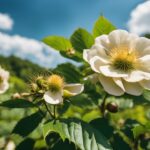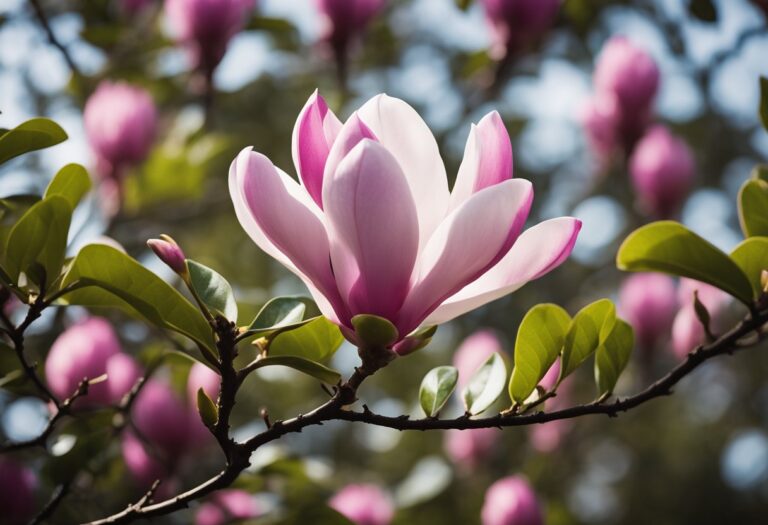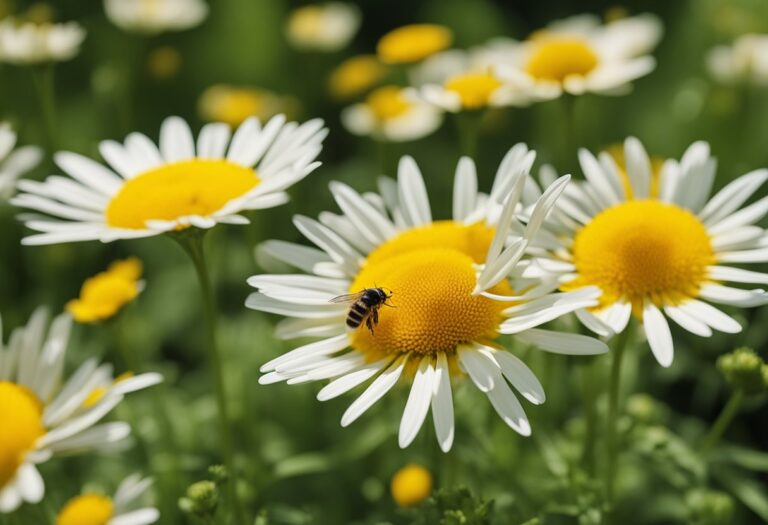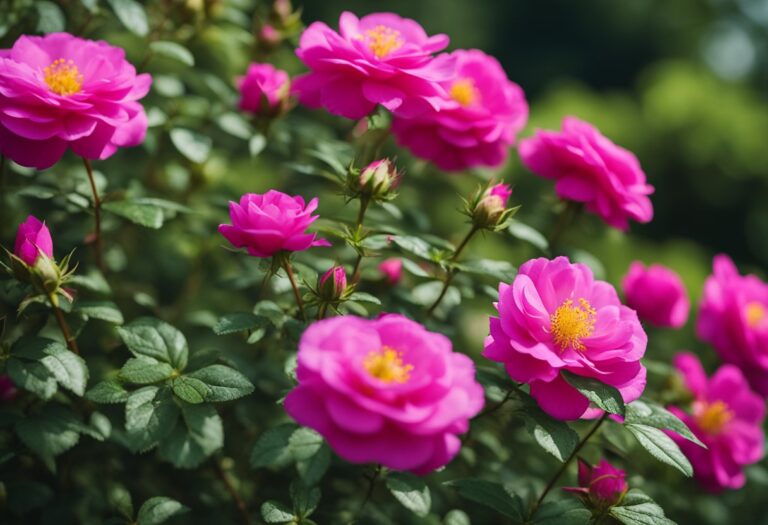Overview of Acer Palmatum ‘Bihou’
Acer Palmatum ‘Bihou’ is a small, upright deciduous tree well-known for its striking visual interest throughout the year. Your garden can benefit significantly from this Japanese Maple cultivar’s ornamental attributes, which include the following:
- Spring Foliage: In spring, the leaves emerge with a pink hue, gradually transforming into a light yellow-green before maturing into fresh emerald tones.
- Fall Foliage: As autumn approaches, the foliage turns vibrant gold, providing a dramatic seasonal display.
- Winter Interest: One of the Bihou’s most distinctive features is its winter bark. As the leaves drop, the tree reveals its bright branches, maintaining an unusual golden-yellow to apricot color. This provides a striking contrast in your winter garden landscape.
Size and Growth
- Mature Height: Approximately 20 feet
- Mature Width: Approximately 15 feet
- Growth Rate: 12-15 inches per year
This Japanese Maple variant is a resilient addition to your outdoor space. It is known for its vigorous growth and will reach maturity within a few years, presenting itself as a remarkable focal point in your garden.
Cultivation

Cultivating the Japanese Maple ‘Bihou’ is a rewarding experience as it adds a magnificent visual appeal to gardens. Proper planting and care ensure the healthy growth of this specimen tree.
Planting Instructions
Choose a location in your garden that can accommodate a tree reaching up to 20 feet in height and 15 feet in width.
Dig a hole as deep as the root ball and twice as wide.
Place the tree gently, ensuring the top of the root ball is level with the soil surface, and fill the hole with soil.
Next, gently tamp down the soil around the tree and water thoroughly.
Light Requirements
‘Bihou’ thrives in diverse lighting conditions, preferring full sun to partial shade. In regions with harsh sunlight, a location with afternoon shade is beneficial to prevent leaf scorch.
Watering Protocol
During the first growing season, ensure consistent moisture by watering deeply once a week.
After establishment, water your ‘Bihou’ during dry spells. Overwatering or poorly drained soil can be detrimental.
Soil Preferences
‘Bihou’ Japanese Maples favour well-draining soil with high organic matter. They are adaptable but prefer a slightly acidic to neutral pH. If necessary, amend your soil with compost before planting.
Maintenance
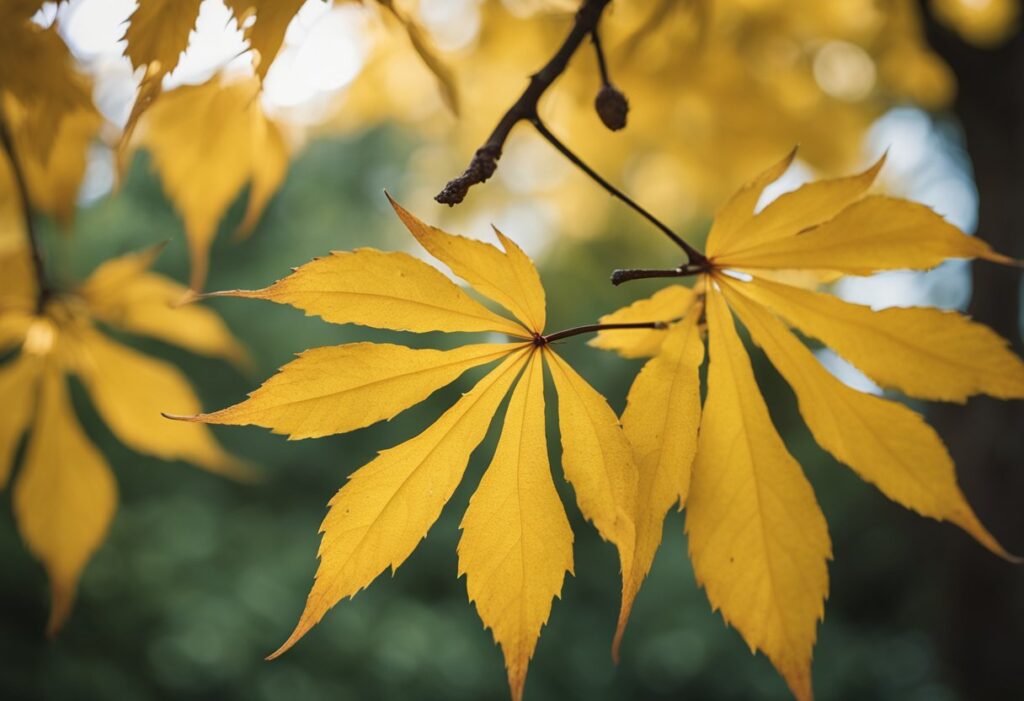
Maintaining your Acer Palmatum ‘Bihou’ Japanese Maple requires attention to pruning, fertilization, and pest control to ensure its vibrant colors and structure throughout the seasons.
Pruning Techniques
Prune your ‘Bihou’ Japanese Maple to maintain its desired shape and encourage healthy growth.
Prune in late winter before the spring growth starts, when the tree is dormant:
- Remove dead or damaged branches to prevent disease.
- Thin out overcrowded areas to improve air circulation.
- Cut back any crossing branches to maintain the tree’s form.
Fertilizing Schedule
Proper fertilization provides the nutrients your ‘Bihou’ needs to thrive.
Use a balanced slow-release fertilizer in early spring as the new growth appears:
- Apply a fertilizer formulated for Japanese Maples with an NPK ratio of 10-10-10.
- Avoid over-fertilization, which can lead to excessive leaf growth at the expense of the tree’s structure and fall colour.
Pest Control
Watch for common pests that may affect your ‘Bihou’ Japanese Maple. Implementing preventative measures is key:
- Aphids and scale can be managed with insecticidal soap or neem oil applications.
- Regular inspection of leaves and branches helps catch infestations early.
- Maintain good hygiene around the tree to minimize the risk of pests and diseases.
Seasonal Changes

The shifting hues of the Japanese Maple ‘Bihou’ throughout the year make it an exceptional addition to your garden. Its vibrant colour changes offer visual interest in every season.
Spring Appearance
Your ‘Bihou’ Japanese Maple begins the season with an eye-catching display in spring.
New leaves emerge with a delicate pink tinge, and as they mature, they transition to a light yellow-green.
This stage presents an exceptionally fresh and vibrant green across the tree’s canopy, injecting a lively burst of color into your garden as it awakens from winter.
Autumn Transition
As the days shorten in autumn, your ‘Bihou’ embarks on a dramatic transformation.
Leaves evolve to a bold, bright yellow, contrasting with the diminishing green and providing a golden spectacle before they ultimately fall.
This seasonal finale showcases the leaves and allows the brightly coloured branches to take centre stage, offering a stark and beautiful contrast against the increasingly bare landscape.
Landscape Design
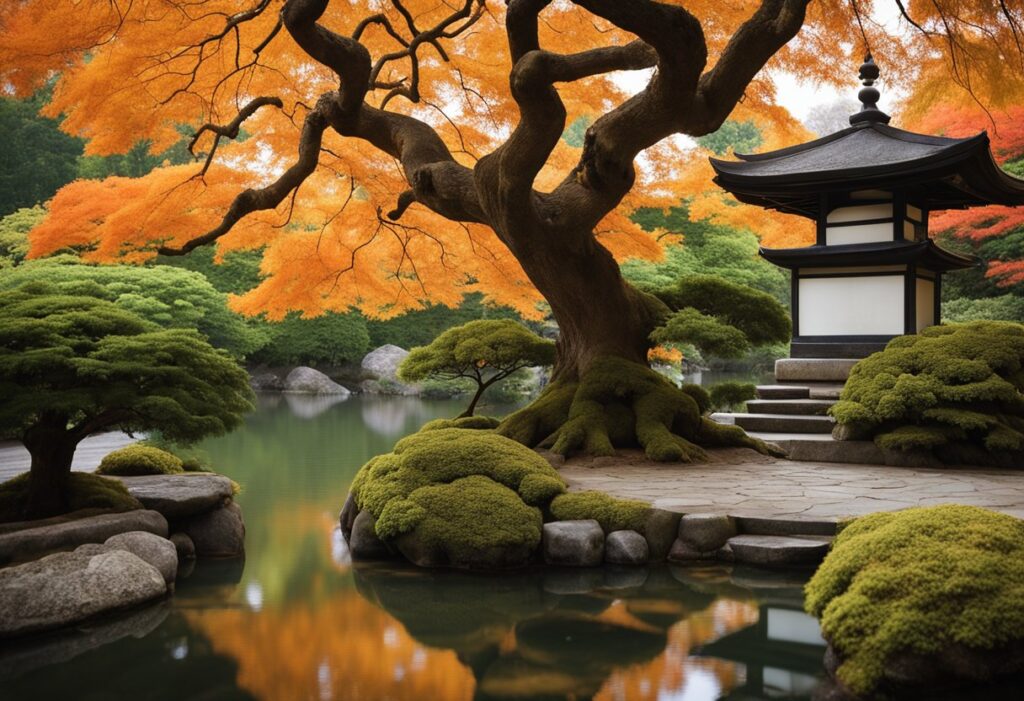
Incorporating the Acer Palmatum ‘Bihou’ into your landscape offers vibrant seasonal colors and unique bark interest. This Japanese Maple variant, with its bright winter branches and colorful foliage, becomes a focal point in any garden design.
Companion Planting
When selecting companions for the ‘Bihou’, your choices should complement its seasonal changes:
- Spring and Summer: Pair the ‘Bihou’ with understory plants that prefer partial shade, such as Hostas or Ferns.
- Fall: Opt for companions with contrasting autumn hues like Asters or Sedum ‘Autumn Joy’ to enhance the golden fall color of ‘Bihou’.
- Winter: Position evergreens like Douglas Fir or Blue Spruce nearby to offset the ‘Bihou’s’ bright yellow to apricot-orange winter branches.
Usage in Gardens
The ‘Bihou’ fits into various garden styles and sizes due to its manageable growth:
- Small Gardens: Utilize ‘Bihou’ as a standalone specimen to maximize limited space without overcrowding.
- Large Gardens: Group ‘Bihou’ with other Japanese Maples of different sizes and leaf colors to create a multi-seasonal display.
- Theme Gardens: Include ‘Bihou’ in a Japanese Zen garden for its aesthetic form and calming presence.
Frequently Asked Questions
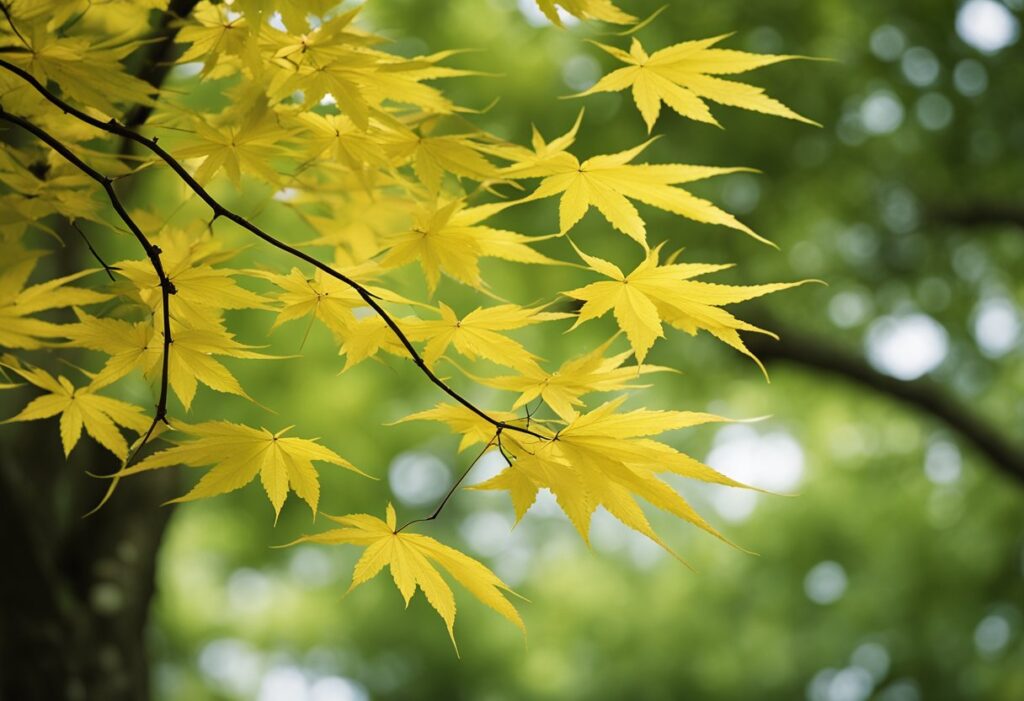
This section provides detailed answers to some of the most common questions about the Acer Palmatum ‘Bihou’.
How should one care for an Acer Palmatum ‘Bihou’ throughout the seasons?
Your Bihou Japanese Maple requires varying care as seasons change.
Its pink leaves transition to light yellow-green in spring before maturing to emerald. It prefers sun to part shade and regular watering to maintain even soil moisture. In the fall, reduce watering and admire its gold canopy.
What is the typical growth rate of an Acer Palmatum ‘Bihou’ tree?
The Acer Palmatum ‘Bihou’ grows approximately 12-15 inches annually. It’s an intermediate grower that, with proper care, steadily reaches its mature size.
What are the mature dimensions of an Acer Palmatum ‘Bihou’ tree?
At maturity, a Bihou Japanese Maple can reach a height of 20 feet and a width of 15 feet. It forms a graceful, upright shape that fits well in diverse garden settings.
Are there specific soil requirements for optimal growth of a Bihou Japanese Maple?
This tree flourishes in well-drained soil rich in organic matter.
The soil pH should be slightly acidic to neutral. Consistency in moisture helps promote healthy growth, but the tree does tolerate a range of soil types.
What are the unique characteristics of the Acer Palmatum ‘Bihou’s bark?
The Bihou Japanese Maple’s bark displays a distinctive golden yellow or apricot color in winter, offering visual interest when the leaves have fallen. This characteristic differentiates it from other Japanese Maples with more subdued bark colors.
How does the Acer Palmatum ‘Bihou’ compare to other Japanese Maple varieties in terms of popularity?
There are many popular varieties of Japanese Maple. The Acer Palmatum ‘Bihou’ is esteemed for its unique bark color and brilliant fall foliage.
These features make it a favoured choice among gardeners. They seek a standout specimen tree for year-round interest.


